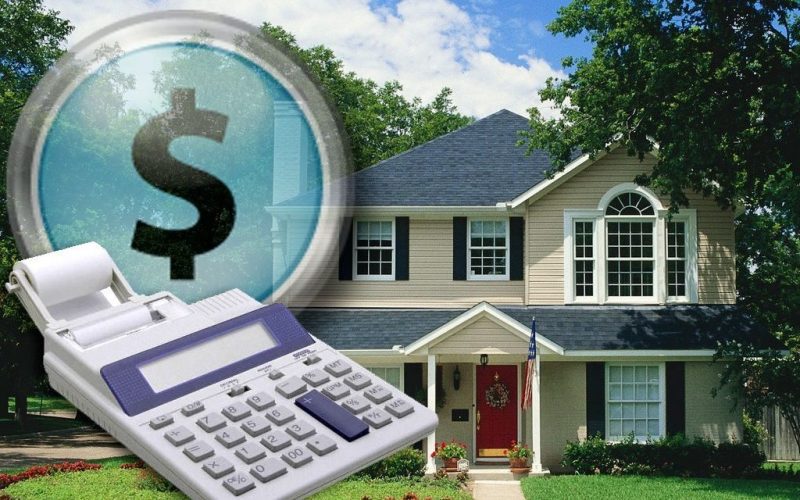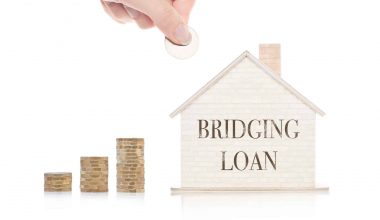Refinancing a home loan is when you take out a new loan to replace your existing one. More interestingly, you get to keep your asset but have a new loan with new terms. The refinancing process has the same procedures as getting a new house, applying for a loan, home appraisal, and closing.
Here in this article, we’d be talking more about refinancing a home loan rates, costs and how it works, plus how to refinance a loan with a bad credit history
Refinancing Home Loan Meaning
Refinancing entails re-evaluating a person or business’s loan and repayment status. Also, It’s the process of replacing an existing loan with a new one that pays off the previous one’s obligation. To make the entire procedure worthwhile, the new loan should preferably have better conditions or features that boost your finances.
How Does Refinancing Home Loan Work?
Consumers typically seek to refinance certain financial obligations to obtain better loan terms, often in response to changing economic conditions. Common refinancing goals include lowering one’s fixed interest rate to reduce payments throughout the life of the loan. Also, changing the loan’s duration, or switching from a fixed-rate mortgage to an adjustable-rate mortgage (ARM) or vice versa.
Borrowers may also refinance because their credit score has improved or because their long-term financial intentions have changed. Or perhaps, they borrow to pay off existing obligations by combining them into a single low-interest loan.
The interest-rate environment is the most typical reason for refinancing a loan. As interest rates fluctuate, many consumers prefer to refinance when rates fall. National monetary policy, the economic cycle, and market competitiveness determine whether interest rates rise or fall for consumers. These variables impact interest rates for all sorts of credit products, including non-revolving loans and revolving credit cards. In a rising-rate environment, borrowers with variable-interest-rate products wind up paying more in interest. While in a falling-rate environment, the opposite is true.
In refinancing a home loan, the borrower must approach his or her lender with the request and fill out a new loan application. Following that, refinancing entails re-evaluating an individual’s or a business’ credit terms and financial situation. Mortgage loans, vehicle loans, and student loans are examples of consumer loans that are commonly considered for refinancing.
Additionally, businesses may also attempt to refinance commercial mortgage debts. Many business investors may scrutinize their corporate balance sheets for business loans granted by creditors who may profit from lower market rates or a better credit rating.
Home Loan Refinancing Options
There are different varieties to refinancing a home loan. The type of loan a borrower chooses is determined by his or her needs. Among these refinancing loan options are:
#1. Cash-out refinancing
Cash-outs are typical when the value of the underlying asset that serves as collateral for the loan rises. Furthermore, it entails removing the asset’s value or equity in return for a larger loan amount. In other words, if the value of an item rises on paper, you can access that value through a loan rather than selling it.
This option raises the overall loan amount but provides the borrower with fast access to cash while retaining ownership of the asset.
#2. Rate-and-term refinancing
This is the most prevalent type of loan refinancing. When refinancing your loan, you pay off the previous loan and replace it with a new loan agreement that has lower interest payments.
#3. Cash-in refinancing
A cash-in refinance allows the borrower to pay off some of the debt in exchange for a lower loan-to-value (LTV) ratio or cheaper loan instalments.
#4. Consolidation refinancing
A consolidation loan may be an effective way of refinancing in some cases. When an investor secures a single loan at a cheaper interest rate than their current average interest rate across many credit products, this is referred to as consolidation refinancing.
Moreover, this sort of refinancing requires the consumer or business to apply for a new loan at a lower interest rate and then use the new loan to pay down current debt, leaving their total outstanding balance with significantly lower interest rate payments.
Refinancing a Loan With Bad Credit
Depending on the type of loan you apply for, there are requirements for refinancing a home loan with bad credit. Of course, a home owner with bad credit has a shot at loan refinancing using federal funding programs or lending programs with more lenient credit score requirements.
Peoples Bank Mortgage, situated in South Carolina, for example, offers a “fresh chance” portfolio loan that allows you to get a home loan refinancing even if your credit has been bad in the prior two years.
However, in order to qualify for program assistance, you must also meet certain standards. A standard criterion is that there be a “net tangible benefit” for you to refinance, such as earning a lower rate by at least 0.5 per cent or choosing a shorter term. Consequently, if you’re unable to meet the requirements of a program, your loan application will be disallowed.
Truly, refinancing a loan would make you a better deal. Still, before you make a decision, you should investigate your refinancing choices and thoroughly evaluate them. Do the following:
#1. Select an FHA Refinancing Loan Option
For home owners with bad credit scores, the FHA offers a variety of loan refinancing options. One major stipulation: your loan must already be an FHA loan to qualify. The FHA loans are as follows:
- FHA streamline refinance: To be eligible for this program, you must already have an FHA mortgage and be current on payments. FHA streamline refinance loans are classified into two types: credit-qualifying and non-credit-qualifying. The latter does not necessitate a home assessment, a comprehensive credit check, or examination of your debt-to-income ratio. However, you may have to pay a little higher interest rate than if you refinance with a credit-qualifying loan.
- FHA rate-and-term refinance: If you have a high-interest rate, you may benefit from this sort of FHA financing. It’s intended to assist borrowers in refinancing their primary residences and lowering their monthly housing bills. Unlike the FHA streamline refinance, this option requires a credit check and a fresh appraisal. To qualify, you must have made six consecutive on-time and in-full mortgage payments.
#2. Speak With Your Current Lender
Due to your previous loan, you may already have a relationship with your current lender. As a result, it may be prudent to first meet with your lender, explain your position, and determine your options. Also, inquire with your lender about the cost and types of loan refinancing programs available, particularly for homeowners with a bad credit score.
On the other hand, if you are unhappy with your lender’s alternatives, don’t be hesitant to contact other lenders and shop around. Not all lenders provide the same types of loans, and one lender may be a better fit for your position than another.
#3. Consider a VA Refinance Loan
If you already have a VA-backed mortgage, you can refinance with the Interest Rate Reduction Refinance Loan (IRRRL), which often does not require a credit score or assessment. Furthermore, there is no annual fee to guarantee the loan. With a VA loan, you can refinance up to 100% of the property’s value. To obtain this VA loan, however, you must go via a private bank, mortgage business, or credit union.
#4. Take into account a Portfolio Refinance Loan
A portfolio loan refinancing option is one that is not available on the secondary market and must be obtained from a lender. Banks and mortgage brokers can set their own rules for this sort of loan, thus their requirements will most likely differ from regular loan requirements.
Lenders will still look closely at your finances and credit history if you apply for a portfolio refinance loan, although the restrictions may be less stringent. they may also be more lenient with their minimum credit score requirements. However, just be sure you aren’t being offered an excessively high-interest rate in exchange for the loose standards.
Most experts think that a loan refinancing is worthwhile as long as it costs less than 0.75 per cent on your interest rate and plan to stay in your home for several years — even with all of the refinancing expenses. According to Freddie Mac, the average cost of refinancing a loan is $5,000. In general, you should expect to pay between 2% and 5% of the overall loan amount.
Refinancing a Home Loan Rates and Costs
Lower interest rates are one of the primary reasons for refinancing a home loan because it can save you hundreds — if not thousands of dollars over time. Furthermore, it can result in cheaper monthly payments, which can help with your monthly cash flow.
Refinancing a home loan costs money, but depending on the circumstances, it may be worthwhile. You’d have to pay closing costs which include fees for the origination, home appraisal, and recording, among other things. Additionally, loan refinancing can help you save money in the long run while also lowering your monthly payment. However, before you proceed, you should analyze the rates and costs of refinancing a home loan.
Here are some of the home loan refinancing factors influencing your total costs:
- The loan amount and Location type
- Whether or not you purchase discount points
- Whether it’s a cash-out refinance or not
- Fees charged for services related to loan closure, such as appraisal and title fees
Loan Refinancing Disadvantages
Even yet, refinancing isn’t always a wise investment decision. The following are some disadvantages:
It’s not cheap. Depending on the lender and the jurisdiction rates, the home loan refinancing might be anywhere from 3% to 6% of the outstanding balance. Some examples of these fees and costs are those associated with the application process as well as those associated with the loan’s origination and appraisal phases. Closing expenses on big loans, such as mortgages, can run into the tens of thousands of dollars.
Furthermore, if you spread out your loan payments over a longer period, you’ll wind up paying more in interest. Hence, lowering your monthly payments may save you money upfront, but the higher borrowing costs you’ll face over the course of the loan’s life may outweigh them.
If you refinance a loan, you may lose some of its beneficial aspects. Student loans from the government, on the other hand, are more forgiving if you run into financial difficulties, as they offer payment deferral or forbearance options that give you a brief break from paying payments. Additionally, if you choose a career in public service, you may be eligible for loan forgiveness of up to $2,500. Perhaps it’s in your best interest to hang on to these low-interest loans.
Lastly, when you refinance, you may potentially be increasing the risk to your property. If you default on your mortgage payments, for example, some states recognize nonrecourse house loans which don’t allow lenders to confiscate anything other than the collateral. Recourse loans, on the other hand, allows lenders to still hold you liable for your debt even if they seize your collateral.
How much equity do I need to refinance?
Typically, in order to refinance the loan, your home must have at least 20% total equity. Most homeowners have enough overall equity to refinance because lenders normally only allow you to borrow up to 80% of the value of your home on a regular mortgage.
Does refinancing hurt your credit?
Your credit score will momentarily drop whenever you refinance a loan, not just as a result of the hard query on your credit report but also because you are taking out a new loan and haven’t yet established your ability to repay it.
What advantage is it to refinance your home?
Decreased interest rate (APR) a smaller monthly installment. a shorter payback period. your equity’s capacity to be withdrawn for other purposes.
At what point is it worth it to refinance?
A general rule of thumb states that if the new rate is at least 1% lower than the rate you currently have, refinancing will be advantageous. Consider whether the monthly savings are sufficient to significantly improve your life or whether the total savings over the loan’s term will be advantageous to you.
Is there a negative to refinancing?
Refinancing has a lot of drawbacks, but the biggest is that it is expensive. You’re obtaining a new mortgage to pay off the previous one, so you’ll be required to cover the majority of the same closing costs as when you first purchased the house, such as origination fees, title insurance, application fees, and closing costs.
Is refinancing as hard as getting a mortgage?
Although it involves many of the same processes, the refinancing process is frequently less difficult than the house purchase process. Although it can be challenging to estimate how long you’re refinance would take, the average time frame is 30 to 45 days.
Conclusion
Refinancing can be advantageous, especially if you have restrictions that prevent you from repaying your previous debts. However, before commencing on a home loan refinancing with bad credit, it is highly recommended that you review the rates and weigh your choices.
Related Articles
- 6 Tips For Competitive Commercial Property Refinancing
- Refinancing loans: why is this an intelligent choice?
- Manual Underwriting Process for Mortgages, FHA & VA Loans
- Mortgage Calculator Refinance Guide: Overview, Comparisons, & All you need
- Refinancing A Loan: What It Means & How It Works (Detailed Guide)
What is The Point Of Refinancing?
Refinancing comprises replacing your current mortgage with a new one, ideally at a lower interest rate. Additionally, Refinancing can allow you to lower your monthly payment, save money on interest throughout the life of your loan, pay your mortgage off sooner and draw from your home’s equity if you need cash for any purpose
Is It Worth Refinancing My House Right Now?
As a general guideline, if mortgage rates are 1 per cent or lower than your current rate, it makes sense to refinance. A credit check, appraisal, origination fees, and closing charges all need to be added up to determine your possible savings on refinancing.
What Are The Main Reasons For Refinancing?
Best reasons to refinance your mortgage
- Lower your interest rate
- Consolidate high-interest debt.
- Eliminate mortgage insurance.
- Save money for a new home.
- Splurge on luxury purchases with a cash-out refinance.
- Move into a longer-term loan.
- Pay off your home faster if you haven’t met other financial goals
What is The Risk Of Refinancing
Borrowers face refinancing risks if they cannot refinance their existing debt with new loans. Refinancing risk can affect any business or individual, whether it’s due to a decline in credit quality or changes in the market.
Does Refinancing Affect Your Credit?
New debt lowers your credit score, but refinancing replaces an existing loan with one for about the same amount, so the impact on your credit score is negligible.






